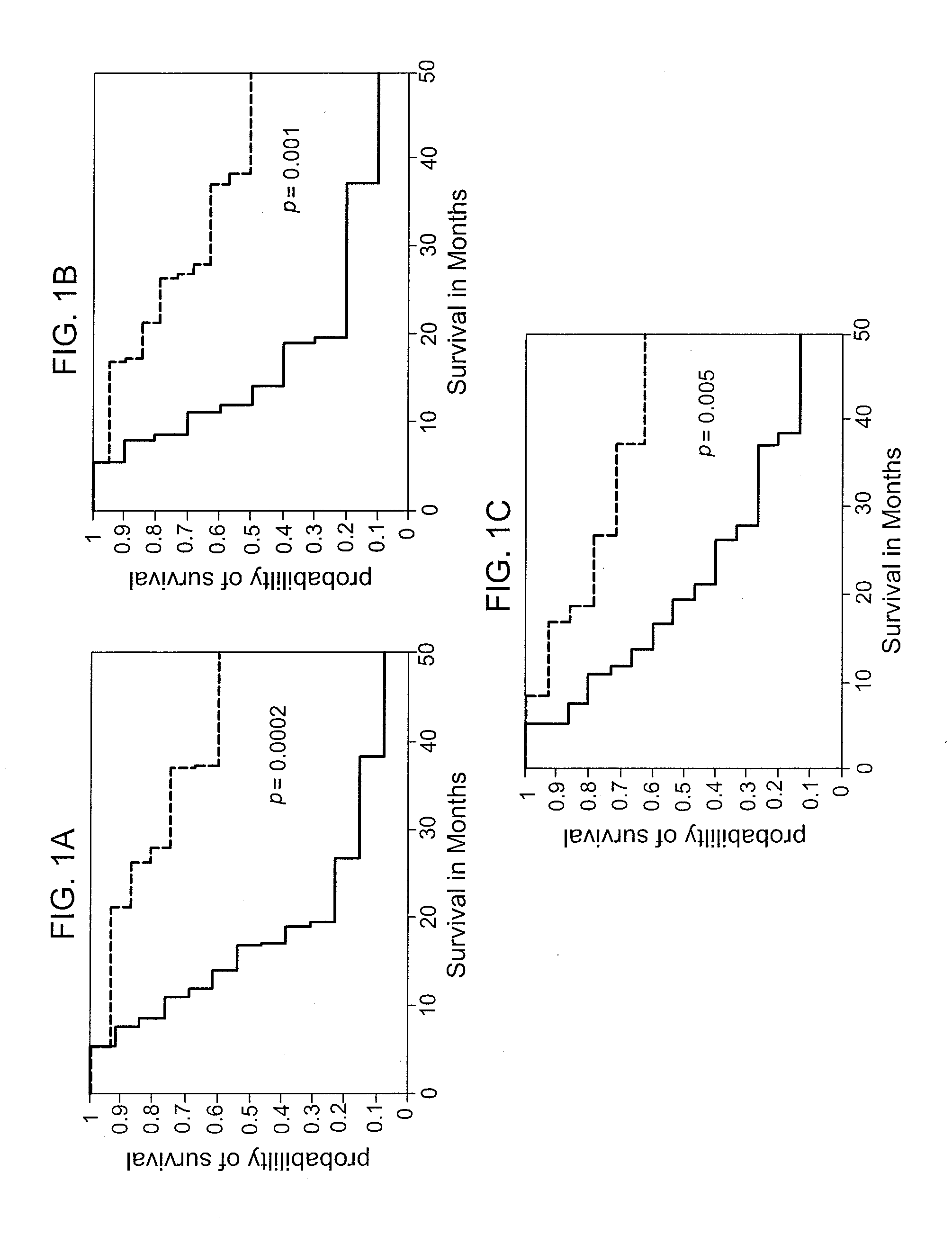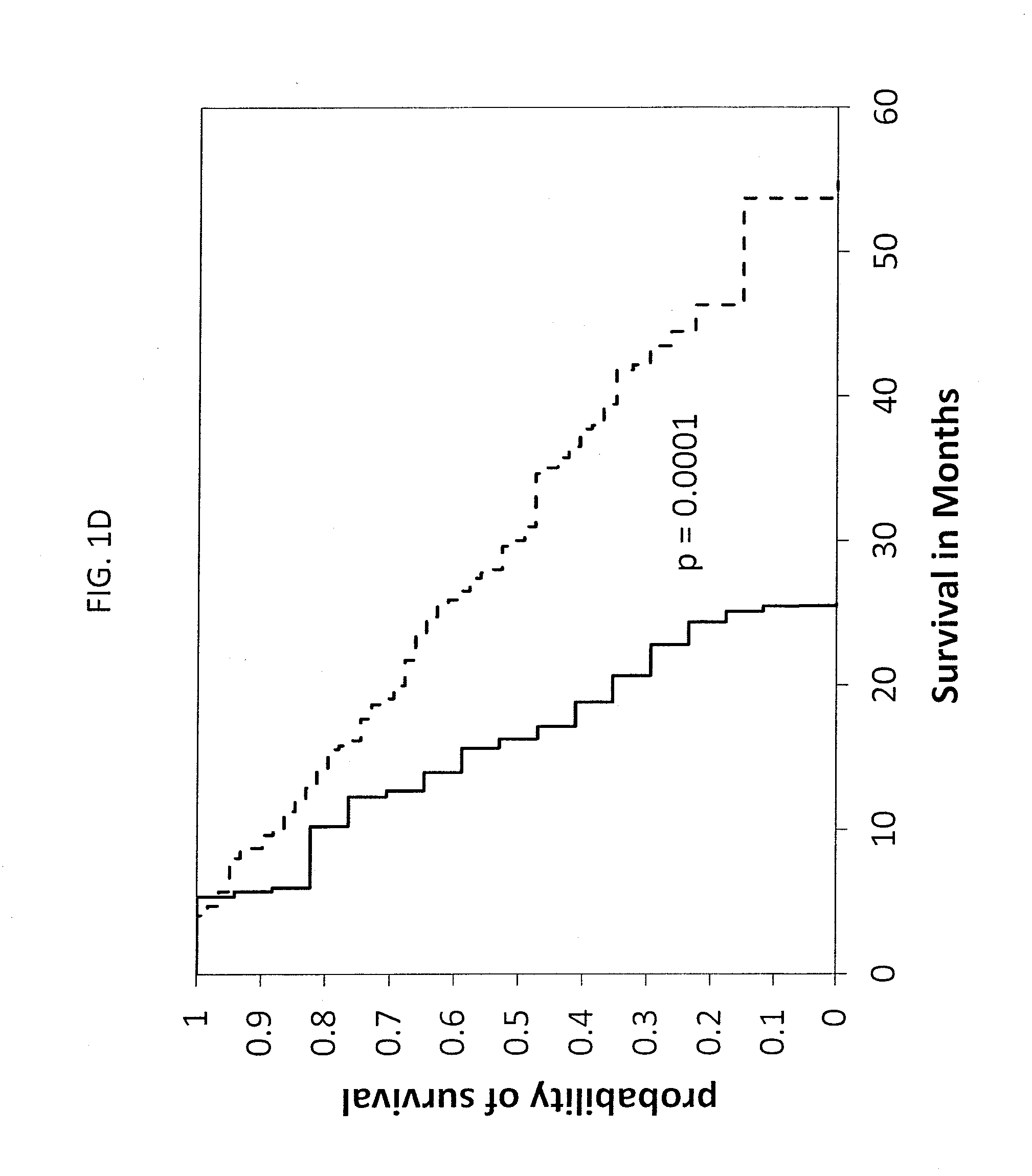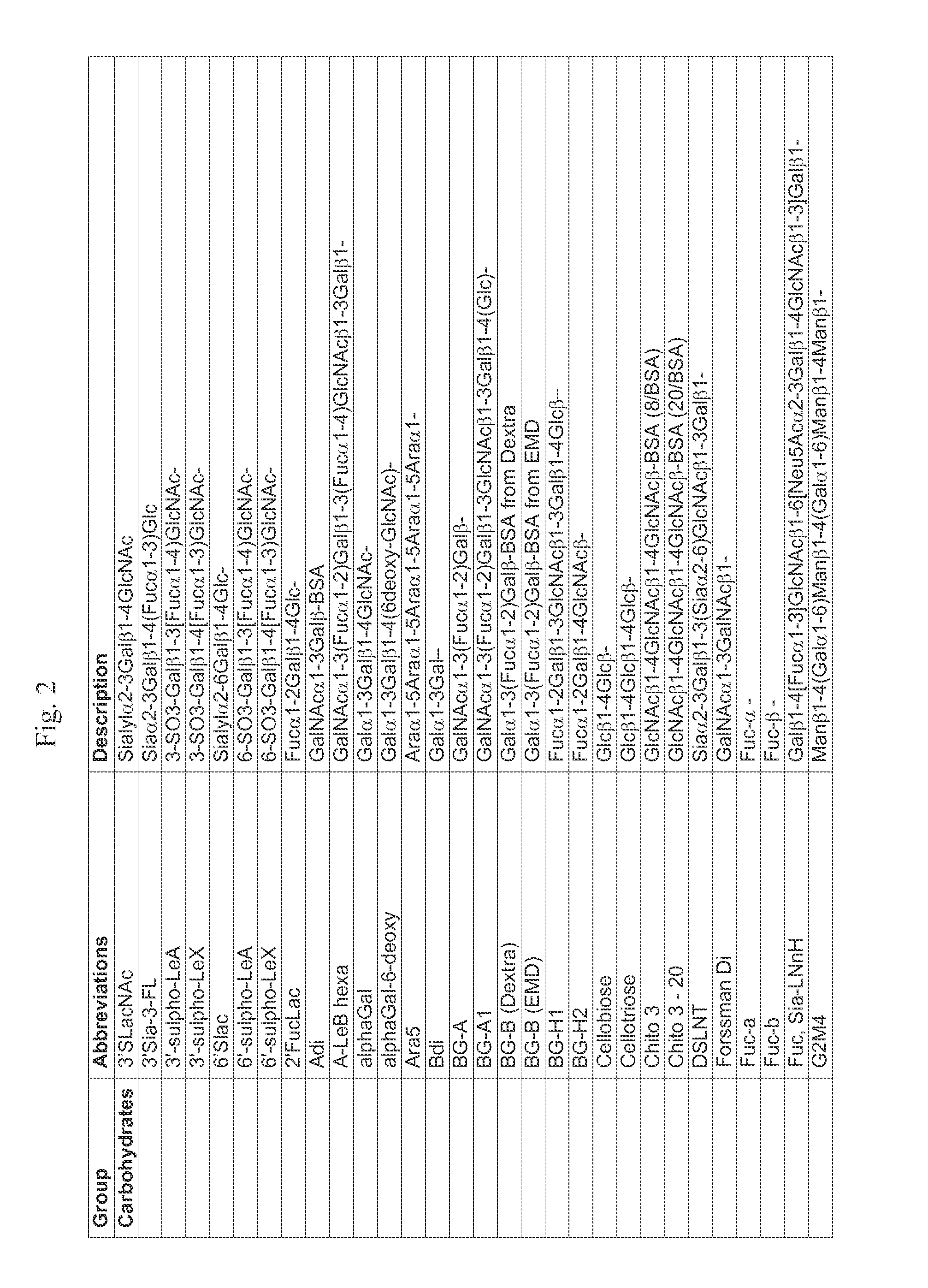Biomarkers for prostate cancer and methods for their detection
a prostate cancer and biomarker technology, applied in the field of prostate cancer biomarkers and methods for their detection, can solve the problem of not having a good method for selecting the subset of patients, and achieve the effect of increasing the amount of one or more glycans or glycoprotein antigens, improving the efficacy of a virus-based vaccine and improving the efficacy of a vaccin
- Summary
- Abstract
- Description
- Claims
- Application Information
AI Technical Summary
Benefits of technology
Problems solved by technology
Method used
Image
Examples
example 1
[0073]This example demonstrates the identification of predictive markers and markers of efficacy of a clinical vaccine treatment for prostate cancer.
[0074]Initial studies were conducted on serum samples from 29 patients immunized with the PROSTVAC-VF vaccine (see, e.g., Gulley et al., Cancer Immunol. Immunother., 2(2): 155-158 (2010)). Briefly, patients with metastatic castrate-resistant prostate cancer were vaccinated once with a recombinant vaccinia virus containing the human genes for prostate specific antigen (PSA) and three costimulatory molecules (B7.1, LFA-3, and ICAM-1). Patients received monthly boosters with the recombinant fowlpox virus containing the same four transgenes. Patients with a rising PSA or new lesions were taken off study for disease progression, but survival status was updated periodically. Sera prior to vaccination and 3 months after vaccination were profiled on a neoglycoprotein array as described in Zhang et al., Mol. Biosyst., 6: 1-9 (2010). Exemplary ar...
example 2
[0084]This example demonstrates the identification of prognostic markers for prostate cancer.
[0085]There are a number treatment options for prostate cancer patients, but many of these treatments can cause significant side effects. In addition, many prostate tumors end up growing slowly and do not need treatment; however, it is very difficult to determine which patients should be treated aggressively and which are better served by a “watch and wait” approach. Better prognostic markers could be useful for aiding treatment decisions.
[0086]The Halabi nomogram provides a good estimation of life expectancy on treatment for patients with prostate cancer. It is most accurate for groups of patients, but also provides a reasonable projection on an individual basis. The nomogram combines many different measures of tumor aggressiveness and tumor burden, such as PSA levels and Gleason scores.
[0087]Antibody subpopulations in serum of patients were identified that correlate with the Halabi predict...
example 3
[0089]This example describes experiments to validate the above-described findings with a larger set of patients.
[0090]A multicenter phase II trial was completed on the PROSTVAC-VF vaccine involving 112 patients. Patients received PROSTVAC-VF therapy or control vectors. The inclusion criteria, vaccine construct, and therapeutic protocol for this trial were essentially the same as the 29 patients described in Example 1.
[0091]Anti-glycan antibody populations in sera before and 3 months after vaccination at both 1:50 and 1:200 were be profiled using the array technology described in Example 1. Combined antibody levels (anti-Ig), as well as IgG and IgM separately, were examined. All clinical data was blinded until after the profiling was complete. Once the survival data was unblinded, the relationships between antibody signals and survival were analyzed. Pearson correlations, hazard ratios, Kaplan-Meier curves, ROC curves, and each of their corresponding p-values were evaluated as discus...
PUM
| Property | Measurement | Unit |
|---|---|---|
| structures | aaaaa | aaaaa |
| affinity | aaaaa | aaaaa |
| binding affinity | aaaaa | aaaaa |
Abstract
Description
Claims
Application Information
 Login to View More
Login to View More - R&D
- Intellectual Property
- Life Sciences
- Materials
- Tech Scout
- Unparalleled Data Quality
- Higher Quality Content
- 60% Fewer Hallucinations
Browse by: Latest US Patents, China's latest patents, Technical Efficacy Thesaurus, Application Domain, Technology Topic, Popular Technical Reports.
© 2025 PatSnap. All rights reserved.Legal|Privacy policy|Modern Slavery Act Transparency Statement|Sitemap|About US| Contact US: help@patsnap.com



